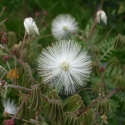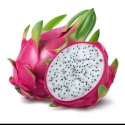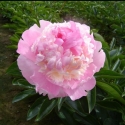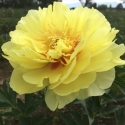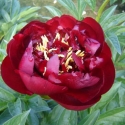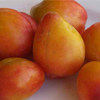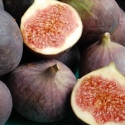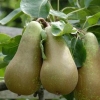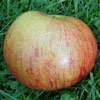Saturday 12th March, 2022
Hi
When you have been around a while and this is not about me (or maybe it is) but rather Wairere. You suddenly realise that Wairere has had an almost 30 year relationship with many of it's suppliers and very sadly some of them are hanging up their budding and cutting knives. The tough thing is that there doesn't appear to be any newbie Rose and Camellia growers to supply the industry. This year is the final one for yet another of our major Rose suppliers and next year will be the last for one of NZ's finest specialist Camellia growers. Of course there will always be Roses and Camellias but perhaps not such an extensive range which we have always prided ourselves on, having the best plants and an exceptional range.
Thankfully these suppliers have earlier indicated their intentions to retire from what has obviously been a life of horticultural passion and so we have used the opportunity and time to communicate our future needs to other suppliers. This is to see if they can increase their production and range. But great plants do take time and space. A new era or decade of relationships and new beginnings.
So what does it take to produce a quality Camellia? Well they start life as cuttings from mother plants. It's been a while since I have done any cuttings myself but usually they are taken from new seasons growth that has hardened or firmed to the touch. Usually they are around 10 to 15cm long and cut below a bud and again above the top bud and all leaves removed except one which is halved. Tip cuttings are just that, the tip is the piece used. Often a wound is made along the lower part of the stem, dipped into appropriate rooting hormone and inserted into a pumice, sand or peat mix. Some growers have bottom heat and mist, others may use cold frames and the mix will suit the production method. Rooting will probably take 3 to 9 month depending on all the variables.
Once these pieces of stem have roots their next phase is in a tube or a small square pot for another 6 months to a year or until the roots have filled the tube. But wait there's more.. Depending on the variety some will go into their final pot or bag size for another 12 to 18 months or have another in between growing phase in a smaller bag. Then there is the matter of pinching the plant so that it bushes up and becomes the plant that we want to buy. All in all it may be a 4 to 6 year process for the end product.
To that end the very first of the new season Camellias from one of the very best growers have started to arrive Sasanquas, Japonicas and hybrids. As usual the quality of the plants are superb.
Sasanquas bring in the Autumn for me with their often simple flowers with a musky fragrance that is typical of the species. A good generalisation would be that sasanquas typically have smaller flowers and leaves and more open habit than say the Japonica and Reticulatas which also flower in the Autumn and are a great subject for that quintessential classic English hedge. In fact I would go one step further and say they usually perform exceptionally well in this regard. Not may plants regenerate, have longevity and just simply perform as well as a Camellia used in a hedge format.
Don't limit Sasanquas to being just a hedge, they are totally suitable as a shrub in the garden or even grown into a small tree which you will soon see flowering around the towns.
The species Japonica needs a mention here too, being quite a large group of cultivars for us (again generalizing). They have larger leaves and flowers and quite a dense more shrub like form. Usually with larger flowers in many different styles from anemone, formal double, informal double although not so many singles in this variety.
Dragon fruit, White Flesh Pitahaya & for technos Hylocereus Undatus
Now this is a bit special and the first time ever that we have had these.
Dragon fruit plants that I naively thought of as some sort of upright cactus until Blair pointed out to me that not all is as it looks. This subtropical fruit is a native of southern Mexico and across central and south America. Not only is the fruit classed as a "super food" due to its high levels of antioxidants, minerals and vitamins but the flower is also edible if cooked and can even be steeped into Tea. For those of you out there keen on something a bit different or looking to add to your food garden then I'd say one of these should definitely make the cut.
Calliandra Portoricensis - This is another plant that caught my eye and is more commonly known as the Snowflake Acacia or the Powder Puff plant. A hardy green shrub or small tree, the white fluffy flowers typically open up at night and release an alluring spicy scent and in tandem as if to contrast this the fern like leaves draw themselves closed at night. It does well in sun or partial shaded position and likes to be in a dry/well drained spot.
Pepper tree or Schinus Molle
I have to own up to the fact that the we often have a laugh about the pronunciation of this ones Latin name. Being a Kiwi lad and doing my studies by correspondence, well I just made up my own way of saying this one. But those here from Chile and Argentina have a great chuckle and are quick with the correct pronunciation. As Virginia reminds me that I don't say Schizophrenia like I do Schinus and she does have a point.
Pepper trees grow into quite a large tree with wonderful evergreen and lacy foliage. but there is more and if you are into rough gnarly trunks then this one will even be more up your alley. Small ornamental pinkish red berries just add to the handsomeness of this tree in the winter. I imagine this one gets it's common name because of the fruit but its not the species used for commercial pepper. According to Virginia the pink fruits are used in gourmet coloured pepper mix.
Paeonia lactiflora AKA garden Peony & 5 new varieties
It's true that peonies like the cold or a cooler climate but these beautiful flowers are so worth a crack. Beautiful in the garden and great for picking as well. They enjoy full sun and good rich soil to grow the biggest flowers. These five listed are totally new to us but there are also some stock of the varieties that we usually carry if you want to check them all out.
Peony Angel Cheeks. The bomb shaped flowers are a beautiful soft pink and accentuate the glossy green foliage. The colour gets lighter near the edge. It has a strong stem and fruity fragrant.
Peony Bartzella. This is a special variety with very large, bright yellow, double bloomed flowers. They come with a slightly red centre that stands above the lush dark green deeply dissected foliage.
Peony Buckeye Belle. A stunning semi-double which has deep, rich, dark red blooms that look like velvet. They are held on sturdy stems with dark green foliage. A nice cut flower with high fragrance mid to late season.
Peony Bunker Hill. A beautiful Peony that is considered one of the best varieties for cutting. With beautiful colour flowers of red-pink on a strong straight stem they hold their heads high. Lovely picked and displayed in a vase
Peony Kelways Glorious. Masses of rich, fragrant, double white flowers with a creamy yellow centre. Leaves are dark green and really highlight the many flowers that will grow up and above. Beautiful for a brides bouquet.
Wairere on sale... Its time to make space
Our big sale is in full swing and its great to see so many plants making their way to their new homes.
Roses are all 25% off and these must all go to make space for the new roses coming. Be in quick while there is still quite a fab selection.
Fruit trees such as apples, pears, plums, figs and other selected ranges are all also 25% off the retail price.
Camellias, last seasons ranges either $15 or $25 each as we have now made way for the new season arrivals.
Well its been quite the week with a lot of new stock coming in. I must say the team has really mastered working together and being efficient in unloading, labelling and moving these to their new spots in the nursery. A chain of flat decks trolleying plants sure makes quick work of these large jobs.
So on that note it's another week done and dusted, I hope you all have an great and safe weekend.
Cheers Lloyd,Tony and the Wairere team.
